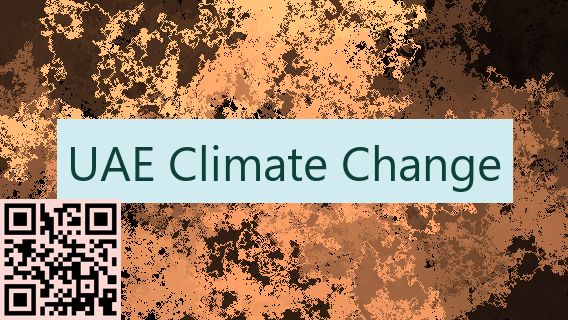UAE Climate Change
Climate change is a term used to describe the global changes in the Earth’s climate, which are believed to be caused by human activities. The United Arab Emirates (UAE) is no stranger to the impacts of climate change, with rising temperatures, changes in precipitation, increasing sea levels, and desertification all occurring in the region. This article will explore the causes, effects, and potential solutions of climate change in the UAE.

The primary cause of climate change in the UAE is the burning of fossil fuels, especially oil, which releases greenhouse gases into the atmosphere. These gases trap heat, causing the Earth’s temperature to rise. The burning of these fuels is a result of the UAE’s reliance on oil for energy and transportation. Additionally, the UAE’s desert environment is highly susceptible to climate change, as the extreme heat and aridity make it more susceptible to changes in temperature and precipitation.
The effects of climate change in the UAE are already being felt. The most noticeable effect of climate change in the UAE is an increase in temperature. The average temperature in the UAE has risen by 1.8 degrees Celsius over the past century and is projected to increase by an additional 2.9 degrees by the end of the century. This increase in temperature is causing increased evaporation, which is exacerbating water shortages in the region. Additionally, rising sea levels are causing coastal flooding, especially in the northern emirates. These floods are a threat to the region’s infrastructure, and present a danger to the people living in coastal areas.

The UAE is taking steps to mitigate the effects of climate change. The UAE’s government has implemented policies to reduce emissions, including switching to renewable sources of energy, such as solar and wind power. Additionally, the UAE has invested in green technologies, such as desalination plants and wastewater treatment plants, to reduce the country’s dependence on fossil fuels. The UAE is also investing in green infrastructure projects, such as urban greening initiatives, to reduce the heat island effect and improve air quality. Finally, the UAE is working to protect its coastal areas from sea level rise by constructing artificial islands and building sea walls.
The UAE is also looking ahead to the future and is developing strategies to adapt to the changing climate. The UAE is focusing on developing drought-resistant crops and water conservation technologies. Additionally, the UAE is investing in climate-resilient infrastructure, such as sea walls, to protect against coastal flooding. The UAE is also investing in early warning systems to prepare for extreme weather events, such as floods and sandstorms.
Climate change is a serious issue that requires immediate action. The UAE is taking the necessary steps to reduce emissions, mitigate the effects of climate change, and adapt to a changing climate. With continued investment in green technologies and infrastructure, the UAE can ensure a more sustainable future.

Finally
The United Arab Emirates (UAE) is no stranger to the impacts of climate change, with rising temperatures, changes in precipitation, increasing sea levels, and desertification all occurring in the region. Additionally, the UAE has invested in green technologies, such as desalination plants and wastewater treatment plants, to reduce the country’s dependence on fossil fuels. The UAE is taking the necessary steps to reduce emissions, mitigate the effects of climate change, and adapt to a changing climate.
#fuel #reduce #consequence #climate #infrastructure #coastal #effects #impression #temperature #ocean #changes #additionally #change #effect #fuels #uae #sea #temperaturechange



